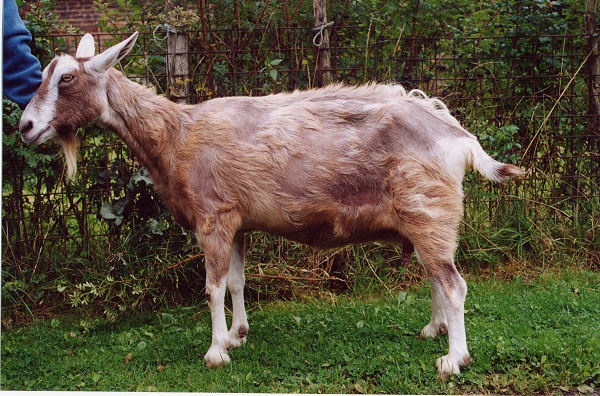
If your goat is losing his hair, parasite infestation or disease are likely culprits. Scientifically termed alopecia, hair loss can also result from self-inflicted trauma, such as a goat constantly scratching on a fence or other object.
Until you know what’s causing the problem, wear disposable gloves when handling your goats. Certain conditions causing alopecia are zoonotic, meaning they can jump from animals to humans.
Caprine Staphylococcal Dermatitis
If your goat’s hair loss follows an outbreak of pustules, pimple-like inflammations containing pus, they may suffer from the skin infection Staphylococcal dermatitis. When the pustules break open, they leave an exudate that becomes encrusted, followed by general hair loss. The pustules and subsequent hair loss occur most often on the udder, under the tail and around the anal area. In severe cases, the hair loss extends along the abdomen, back and neck. Your veterinarian can prescribe antibiotics for the infection, along with medicated shampoos for washing affected areas.
Caprine Sarcoptic Mange
Also called scabies, it is caused by the mite Sarcoptes scabiei. While goats can also suffer from demodectic mange, those parasites don’t usually cause hair loss. Signs of scabies include hair loss around the face and ears and possibly other parts of the body. The skin in the areas of hair loss soon turns scaly. Because scabies is so easily transmitted between goats, treat every animal in the herd, even those who are asymptomatic. In some states, caprine scabies is a reportable disease. Your vet can treat sarcoptic mange via subcutaneous injections of the dewormer ivermectin.
Ringworm in Goats
Ringworm isn’t a worm, but a fungal infection. Affected goats generally lose hair in circular patches on the neck, ears and face, and itch constantly. Since ringworm can spread to other livestock, as well as people, dogs, and cats, always wear gloves when treating this condition. Because it is so contagious, treat every goat in the herd. Your vet can recommend topical treatments, which may contain iodine, or chlorhexidine. It’s also important to sterilize equipment, such as brushes or hoof nippers, shared between goats.
Related Articles & Free Email Newsletter
10 Reasons to Own a Green Cheeked Conure
How to Identify the Symptoms and Treatments for Scours in Goats

Comment here